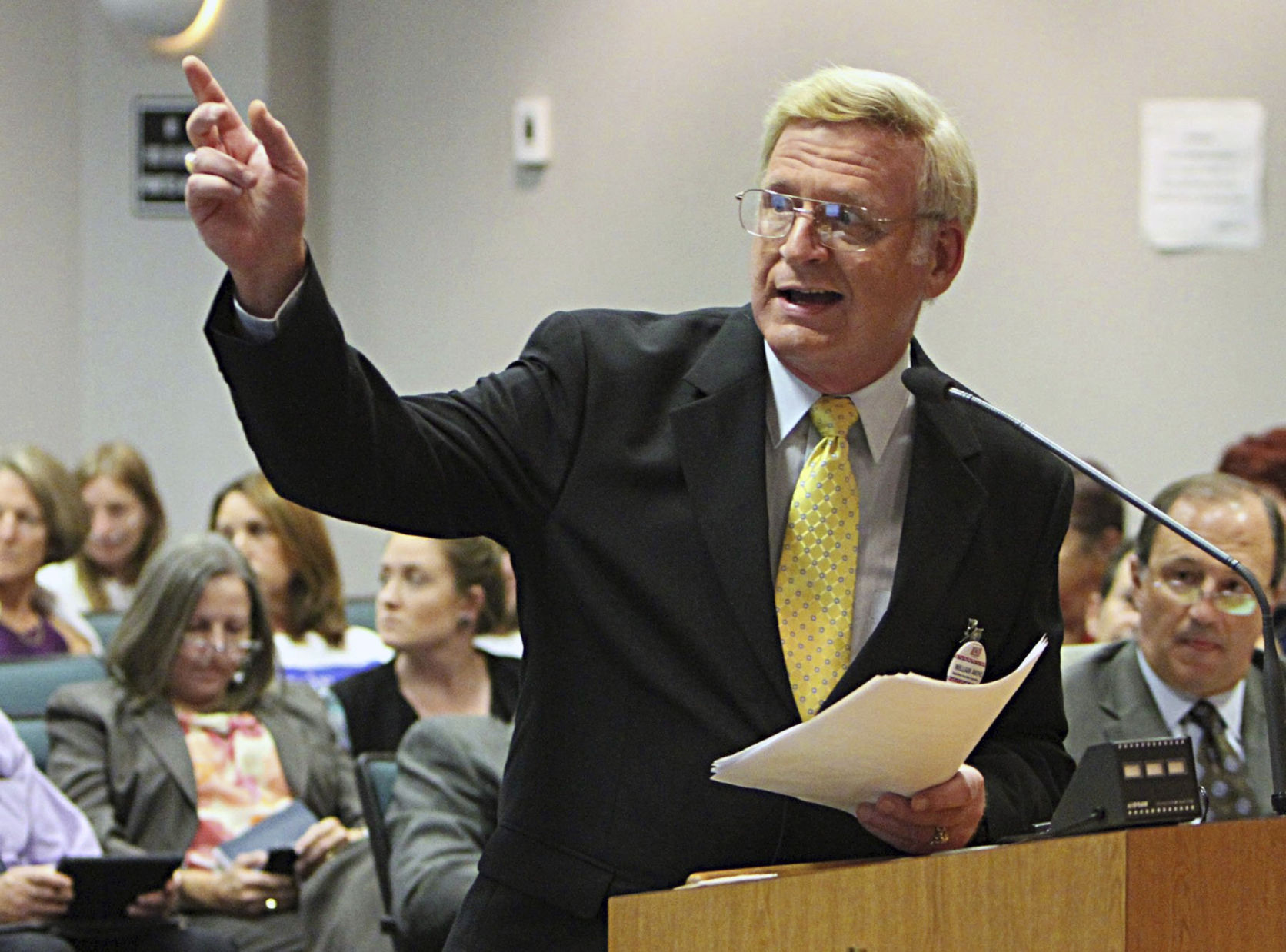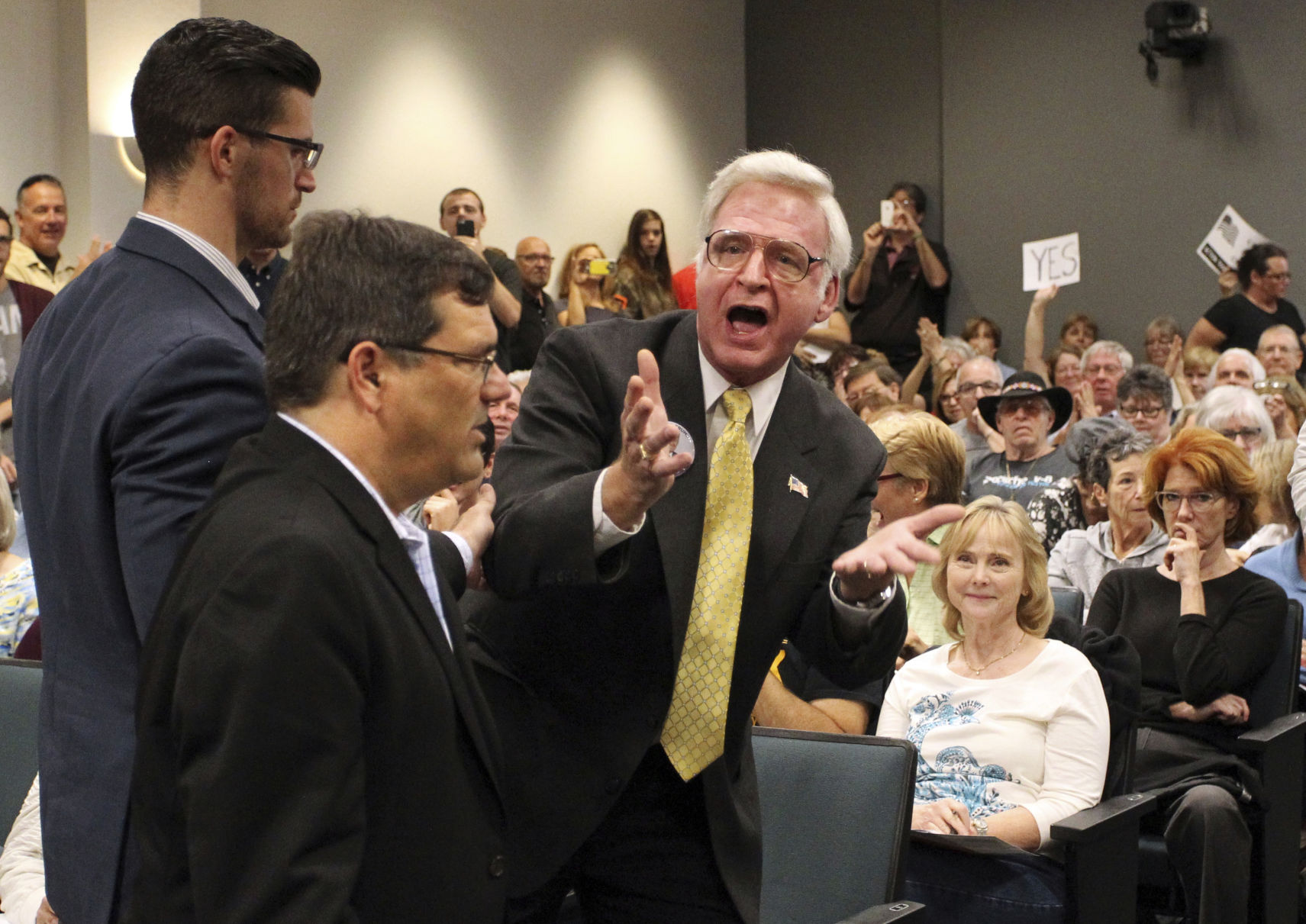Two decades before a secretive gambler lugged an arsenal that included 12 “bump stocks” into a Las Vegas hotel room and opened fire on a crowd of concertgoers, a 40-something ex-Marine was tinkering in his Florida garage, looking for a
Two decades before a secretive gambler lugged an arsenal that included 12 “bump stocks” into a Las Vegas hotel room and opened fire on a crowd of concertgoers, a 40-something ex-Marine was tinkering in his Florida garage, looking for a fresh take on an old idea.
Inspired by footage of the heavy recoil of anti-aircraft guns, Bill Akins wondered if he could design a device to harness a semi-automatic rifle’s recoil to fire bullets at a frequency near that of an automatic weapon.
For decades, avid gun owners had been bracing guns against their hips to increase the rate of their trigger pulls and enjoy the thrill of shooting something akin to a machine gun, a technique known as “bump firing.”
In 1996, Akins built an attachment to two different rifle stocks that did the same. He received a patent in 2000 and began selling what was known as the Akins Accelerator.
The story of his invention is a window on an obscure, do-it-yourself industry that helped create part of the arsenal used by Stephen Paddock, a 64-year-old with no formal military training, to carry out the worst mass shooting in modern American history before killing himself in the Las Vegas hotel.
But the fate of the Akins Accelerator also sheds light on the political furor over whether bump stocks should be banned.
On Thursday, four days after the massacre, the National Rifle Association called for the federal Bureau of Alcohol, Tobacco, Firearms and Explosives to review whether bump stocks comply with federal laws. The National Sports Shooting Foundation, a gun industry trade group, made a similar statement on Monday.
Gun control advocates, Democrats and some Republican members of Congress have called for a law to ban them, because that would have greater legal force and be more permanent.
Congress in 1986 outlawed the sale of new automatic weapons to civilians, though it allowed those who had previously registered such a gun to continue to own or sell it
The ATF has said it only has the power to ban devices that, like machine guns, cause multiple bullets to be fired when the trigger is pulled. The agency has found that current bump stocks on the market only speed the triggering of a gun rather than convert it to shoot multiple bullets per pull — and therefore are legal.
The ATF initially issued a similar ruling on Akins’ device. Then, in 2006, after it went on the market, the agency reversed itself and ordered Akins to stop selling it. The ATF said the initial device it tested had misfired and the agency had determined the Akins Accelerator’s use of a spring effectively made it a machine gun — a modification regulators deemed illegal.
After the ATF approved a bump stock in 2010 created by Slide Fire, a Texas company, Akins sold his patent to another firm that became embroiled in litigation with Slide Fire.
Akins said he is prohibited from discussing the current bump stock industry or any litigation.
“I would like to express my dismay and sincere condolences to the victims, families and anyone effected by the recent mass Las Vegas shooting,” Akins, now 63, said. “Unfortunately I am legally prevented from answering certain questions related to bump fire stocks or bump fire industry unless I am under oath.”
Akins became a viral sensation earlier this year when footage spread online of him arguing with anti-Trump activists about whether President Obama’s health plan contained the equivalent of “death panels.” He then resigned an unpaid position with the local Republican party following a Washington Post report that he’d shared racist memes on Facebook.
Akins maintains he was smeared in the incident and not backed up by the local GOP. He said he is an ordained minister who has married multiracial couples.
Akins is bitter about the ATF’s reversal involving his version of a bump stock. “They cost us hundreds of thousands of dollars and destroyed my company,” he said, noting that he had taken a second mortgage on his house and saw his partnership with a firearms manufacturer dissolve.
The uncertainty of ATF regulation is why the bump stock business, as well as other modifications that speed the rate of fire of some weapons, remains a relatively small part of the gun industry.
Slide Fire did not return a call for comment, but Jeremiah Cottle, its founder and a military veteran, in 2011 told the Albany News in Texas that it sold 35,000 units in the first 11 months after it went on sale. The Dallas Morning News this week reported the company had employed 27 people.
Kristen Rand, legislative director of Violence Policy Center, said the making of bump stocks is a tiny part of the firearms industry.
Still, Rand is concerned the devices are growing in popularity. There have been reports of a run on them since the Las Vegas shooting as hobbyists fear they’ll be banned. “There’s absolutely no reason to have one of these,” she said.
The market of add-ons to speed gunfire continues to live and die by ATF decisions. Online gun enthusiasts were abuzz about the battery-powered Auto Glove that makers touted as being able to make any semi-automatic weapon fire like an automatic.
But on Sept. 11, just a few weeks before the Las Vegas shooting, the ATF issued a letter finding that the device effectively replaced a gun’s trigger and was legally a machine gun. The seller’s website is now dark.
Akins doesn’t think the accessories should be outlawed, but he especially opposes the ATF making the decisions on a case-by-case basis.
“If it was approved by the House, approved by the Senate and approved by Congress,” Akins said, “that’s the right way to do it.”
———
Riccardi reported from Denver. Lisa Marie Pane in Atlanta contributed to this report. Follow Riccardi on Twitter @NickRiccardi.



